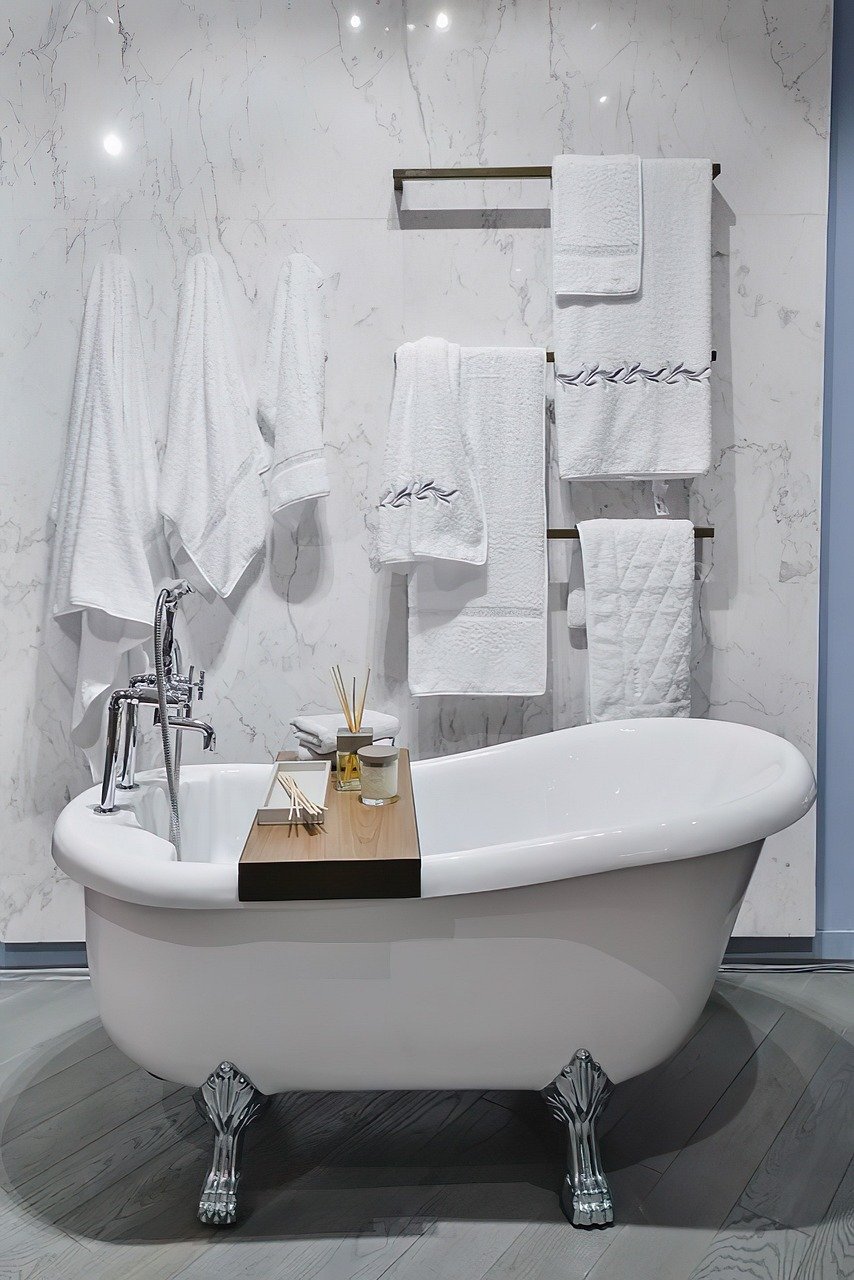Before embarking on any bathroom re-modeling project, a thorough assessment of your current space is crucial. Begin by evaluating the overall condition and layout of your bathroom.
Identify areas that require improvement, such as outdated fixtures, worn flooring, or insufficient lighting.
Pay attention to elements that may not align with your design preferences or practical needs, as these aspects can heavily influence the re-modeling process.
Consider the functionality of your existing bathroom. Are there features that hinder your daily routine? For instance, if your storage capacity is limited, it may be time to explore options for shelving or cabinetry that can accommodate your essentials without cluttering the space. Additionally, if the layout feels cramped or inefficient, think about whether a reconfiguration could enhance the usability and flow. Understanding your lifestyle needs can help pinpoint what must change to create a more effective environment.
Another vital factor to contemplate is the potential for wear and tear in your current fixtures and fittings.
Take a closer look at faucets, shower-heads, and cabinetry; these elements often reveal signs of aging that not only detract from aesthetics but may also lead to functionality issues in the future.
Addressing these concerns early in the assessment phase sets the stage for a smoother renovation.
Finally, establishing a realistic budget and defining the scope of your remodeling project is essential. Analyze how much you are willing to invest and how that budget aligns with your bathroom goals. Consider creating a list of must-have features versus nice-to-have additions, allowing for flexibility while ensuring that enhancements remain within financial reach. Proper assessment of your current bathroom will enable you to approach your upgrade with clarity and purpose.
Choosing the Right Materials and Fixtures
When upgrading a bathroom, selecting the right materials and fixtures is crucial for achieving a balance between style, durability, and budget. The choice of materials can significantly affect the overall aesthetic and functionality of the space.
For flooring, options such as ceramic tiles are popular due to their durability and wide range of design choices. They are resistant to water and stains, making them ideal for bathrooms. Additionally, ceramic tiles can mimic the appearance of stone or wood, providing versatility in design without sacrificing practicality.
When it comes to countertops, quartz surfaces are a splendid choice. They are non-porous, which makes them resistant to stains and bacteria, thereby promoting hygiene. This material also offers a variety of colors and patterns, allowing homeowners to enhance the visual appeal of their bathrooms. A popular example is the use of Caesarstone quartz countertops, which provide both elegance and functionality. Alternatively, natural stone countertops like granite are also appealing but may require more maintenance due to their porous nature.
Cabinetry is another essential element in bathroom design. Opting for solid wood or high-quality plywood can add longevity and strength. Well-crafted cabinetry not only enhances the look of the space but also provides practical storage solutions.
For fixtures, water-efficient options like the Kohler Showerhead are worth considering. This model provides a luxurious shower experience while conserving water. Similarly, Moen faucets are available in various styles, offering elegant additions to kitchen sinks without overwhelming the overall design.
Ultimately, it is vital to weigh the pros and cons of each material and fixture choice. Consideration of maintenance needs, aesthetic preferences, and budget constraints will lead to a well-informed decision that enhances the bathroom’s functionality and appeal.
Enhancing Functionality with Smart Technology
Integrating smart technology into bathroom remodeling can significantly enhance both convenience and energy efficiency, transforming this essential space into a modern sanctuary. Innovations such as smart mirrors, programmable thermostats, and Bluetooth-enabled speakers are gaining traction among homeowners looking for functionality without sacrificing aesthetics. The bathroom, often a place for relaxation and self-care, benefits from such technological enhancements, making it a more enjoyable experience.
One notable example of smart technology in the bathroom is the smart mirror equipped with LED lights and touch controls. These mirrors can adapt brightness levels according to the time of day, allowing users to achieve optimal lighting for tasks such as shaving or applying makeup. Additionally, many smart mirrors come with built-in Bluetooth speakers, enabling users to stream music or podcasts while getting ready. This combination of lighting and sound creates an enriching environment that elevates the daily routine.
Another essential smart device is the programmable thermostat, with the Nest Learning Thermostat being a prime example. This innovative device learns the user’s schedule and preferences, adjusting the temperature accordingly to ensure a comfortable bathroom experience. It contributes to energy savings by optimizing heating and cooling when the space is actually in use. With the ability to control the thermostat through a smartphone app, convenience is taken to another level, allowing adjustments from anywhere in the home.
Overall, the incorporation of smart technology in bathroom remodeling leads to greater functionality and efficiency. These innovations not only enhance user experiences but also reflect a modern lifestyle that values both comfort and sustainability. As homeowners explore upgrading their bathrooms, investing in smart solutions is increasingly seen as a smart choice for improved everyday living.
Final Touches: Decor and Accessories
When it comes to upgrading your bathroom, the final touches through decor and accessories play a crucial role in achieving a well-coordinated design that reflects your personal style. Selecting the right colors for your accessories can set the mood and atmosphere of the room. Consider utilizing a palette that complements your bathroom’s overall theme, whether it be calming pastels, bold hues, or serene neutrals. Remember, cohesion is key in creating a harmonious space.
Artwork can serve as a focal point and a conversation starter. An elegant piece, such as a framed nature photograph or abstract art, can infuse personality into the room. Additionally, decorative items like stylish shower curtains can not only enhance the aesthetics but also provide necessary functionality. Choose fabrics that are easy to clean yet visually appealing. Plush towels, displayed smartly on racks or within decorative baskets, add both comfort and elegance to the setting.
Storage solutions are another essential element to consider. Elegant storage bins or shelves can help keep the space tidy while adding to the overall decor. Look for storage units that fit seamlessly into the existing design while also catering to organization needs. To create a truly inviting atmosphere, consider incorporating natural elements. Indoor plants can bring vibrant life to the space, while scented candles can enhance the sensory experience, turning your bathroom into a sanctuary for relaxation and rejuvenation.
In closing, the accessories and decor you choose for your bathroom can significantly impact its overall look and feel. By thoughtfully selecting colors, artwork, and decorative items, you can transform your bathroom into a cohesive and tranquil oasis, tailored perfectly to your taste and lifestyle.























Leave a Reply